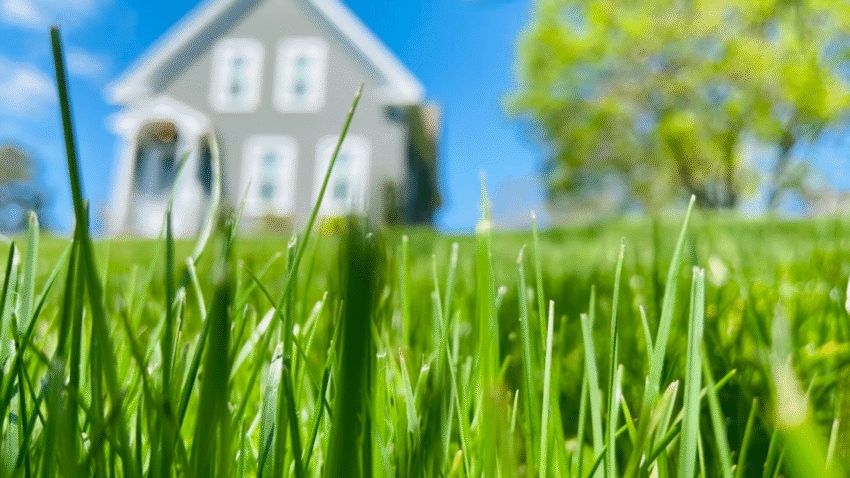Introduction
Raking leaves and bagging grass clippings every season can feel like endless work — but what if you could turn all that yard waste into nutrient-rich compost for your lawn and garden instead? Learning how to compost grass clippings and leaves helps you recycle valuable organic matter, build healthier soil, and reduce waste — all for free!
This step-by-step guide will show you exactly how to transform those piles of clippings and fall leaves into “black gold” that feeds your yard naturally.
Why Composting Clippings and Leaves Matters for a Healthy Lawn
When you compost grass and leaves, you keep valuable nutrients out of landfills and put them right back into your soil.
- Grass clippings are rich in nitrogen — the “green” part of compost — which helps feed microbes that break down organic material.
- Leaves add carbon — the “brown” part — which balances the nitrogen and helps create that crumbly, earthy compost your plants love.
Combining both means faster decomposition and a healthier compost pile that doesn’t smell or attract pests.
Step-by-Step Guide to Compost Grass Clippings and Leaves
Here’s how to do it right, from collecting to turning your finished compost back into your lawn or garden.
1. Gather the Right Tools
You don’t need fancy equipment — just:
- A compost bin, pile, or homemade bin with good airflow.
- A rake and lawn mower (ideally with a bagger).
- A pitchfork or garden fork for turning the pile.
- A hose for watering your pile if it dries out.
2. Collect Grass Clippings and Leaves Properly
Grass clippings:
- Mow when the grass is dry to avoid clumping.
- Bag or rake clippings after mowing if you’re not leaving them as mulch (grasscycling).
- Avoid using clippings from lawns treated with herbicides until they break down completely.
Leaves:
- Rake fallen leaves into manageable piles.
- Shred them with your mower or leaf shredder if possible — shredded leaves decompose much faster than whole ones.
3. Balance Your Greens and Browns
Healthy compost needs the right mix:
- Greens: Fresh grass clippings, veggie scraps, coffee grounds — these provide nitrogen.
- Browns: Dead leaves, straw, small twigs, shredded newspaper — these provide carbon.
Aim for about 2–3 parts browns to 1 part greens by volume. Too much grass will make your pile wet and smelly; too many leaves will slow it down.
4. Build Your Compost Pile
In your compost bin or designated spot:
- Add a base layer of coarse browns — small twigs or shredded branches — for airflow.
- Add alternating thin layers of grass clippings and shredded leaves.
- Lightly water each layer to keep the pile damp but not soggy — think wrung-out sponge.
- Finish with a brown layer on top to reduce odors and deter pests.
5. Turn the Pile Regularly
Turning mixes air into the pile, which helps microbes break down materials faster:
- Use a pitchfork to turn the pile every 1–2 weeks.
- Bring material from the edges into the center.
- If the pile smells sour or looks soggy, add more shredded leaves or straw.
Turning helps you get finished compost in as little as 2–3 months during warm weather.
6. Monitor Moisture and Temperature
A healthy compost pile should be:
- Warm in the middle (between 110–160°F if you want to get technical).
- Moist like a wrung-out sponge — not dry and not dripping wet.
If your pile is too dry, add water. If it’s too wet, add more leaves or other browns.
7. Let It Finish and Cure
Finished compost should be dark, crumbly, and earthy-smelling with no recognizable grass or leaf pieces.
When it’s mostly decomposed, let it “cure” for a few weeks to stabilize before spreading it on your lawn or garden beds.
How to Use Finished Compost
✅ Top Dress Your Lawn:
Spread a ¼–½ inch layer of compost over your lawn in spring or fall to feed your grass naturally.
✅ Amend Garden Beds:
Mix compost into vegetable beds and flower gardens to improve soil structure, fertility, and water retention.
✅ Mulch Around Plants:
Use compost as a mulch to suppress weeds and keep roots cool and moist.
Common Mistakes to Avoid
Mistake 1: Using Clippings From Chemically Treated Lawns
Solution: Avoid composting grass with recent herbicide or pesticide applications. Let treated clippings decompose separately before adding to your compost pile.
Mistake 2: Piling Grass Clippings Too Thick
Solution: Always mix clippings with leaves or other browns to prevent a smelly, slimy mess.
Mistake 3: Forgetting to Shred Leaves
Solution: Whole leaves mat together and take longer to break down. Shred leaves first for faster compost.
Mistake 4: Letting the Pile Dry Out
Solution: Keep your pile damp — moisture is key to decomposition.
Mistake 5: Not Turning the Pile
Solution: Turning adds oxygen, speeds up the process, and prevents foul odors.
Extra Lawn & Compost Tips & Hacks
✅ Grasscycling: If you don’t want to bag clippings, leave them on the lawn — they decompose quickly and feed your soil naturally.
✅ Use Fallen Leaves in Flower Beds: Shred leaves and use them as mulch around trees and shrubs if you have extra.
✅ Compost Tea: Use finished compost to brew compost tea for an extra nutrient boost for your lawn or garden.
👉 Check out our guide on “How to Go Chemical-Free With Your Lawn Care” — composting is the perfect foundation for a lush, organic yard!
Conclusion
Knowing how to compost grass clippings and leaves turns yard waste into a free, natural fertilizer that builds healthier soil and saves you money. With the right balance of greens and browns, a bit of turning, and some patience, you’ll create nutrient-rich compost that keeps your lawn and garden thriving year after year.
Bookmark this guide and share it with neighbors — the more we compost, the greener our yards (and our planet) will be!
